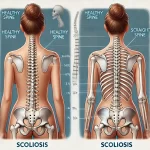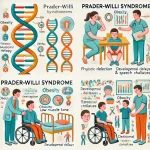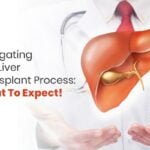Lung Cancer: A Comprehensive Guide to Awareness

What is Lung Cancer?
Lung cancer is a type of cancer that begins in the lungs, the organs responsible for oxygen exchange in the body. It is one of the most common cancers worldwide, often linked to smoking, but it can also occur in non-smokers due to genetic factors or environmental exposure to substances like radon or asbestos. The two main types are small cell lung cancer (SCLC) and non-small cell lung cancer (NSCLC).
Symptoms can vary depending on the type and stage of the cancer. Common signs include a persistent cough, chest pain, shortness of breath, coughing up blood, unexplained weight loss, and fatigue. Early detection is key to improving outcomes.
Types of Lung Cancer

Non-Small Cell Lung Cancer (NSCLC)
This is the most common type, accounting for approximately 85% of cases. It includes subtypes such as adenocarcinoma, squamous cell carcinoma, and large cell carcinoma.

Small Cell Lung Cancer (SCLC)
Comprises approximately 15% of cases, known for rapid growth and early spread.
Causes and Risk Factors
Lung cancer develops when abnormal cells in the lungs grow uncontrollably, often due to exposure to harmful substances or genetic changes. Smoking is the leading cause, as tobacco smoke contains carcinogens that damage lung tissue over time. Secondhand smoke also increases risk. Environmental factors like prolonged exposure to radon gas, asbestos, and air pollution can contribute.
Genetic predisposition plays a role, with some individuals inheriting mutations that heighten susceptibility. Occupational hazards, such as working with chemicals like arsenic or diesel exhaust, can elevate risk. Additionally, personal factors like age (most cases occur in people over 65) and a history of lung diseases such as chronic obstructive pulmonary disease (COPD) or tuberculosis may increase likelihood. Even non-smokers can develop lung cancer due to these risk factors combined with genetic vulnerabilities.


Signs And Symptoms
Symptoms of lung cancer can vary based on its type and stage but often include respiratory and systemic signs. Common symptoms are a persistent cough that worsens over time, chest pain that may intensify with deep breathing, coughing, or laughing, and shortness of breath. Coughing up blood or rust-colored sputum is another warning sign.
Other indicators include unexplained weight loss, loss of appetite, and fatigue. Hoarseness, wheezing, or recurrent respiratory infections like pneumonia or bronchitis may also occur. In advanced stages, symptoms can extend to bone pain, headaches, or neurological issues if the cancer spreads.
Diagnosis
Diagnosis of lung cancer typically begins with a review of medical history, symptoms, and risk factors such as smoking or environmental exposures. A physical examination is followed by imaging tests like chest X-rays and CT scans, which help identify abnormal growths in the lungs. If cancer is suspected, further tests are conducted to confirm the diagnosis.
A biopsy, where a small tissue sample is taken from the lung, is the most definitive diagnostic method. This can be performed using bronchoscopy, needle aspiration, or surgical methods. Additional tests, such as PET scans or MRI, may be done to determine if the cancer has spread (staging). Blood tests can also provide supportive information. Accurate diagnosis and staging are essential to guide treatment decisions, which may include surgery, chemotherapy, radiation, or targeted therapies.


Treatment Options
Treatment strategies depend on cancer type, stage, and patient health:
Surgery: Removal of cancerous tissue, typically for early-stage NSCLC.
Radiation Therapy: High-energy rays target and kill cancer cells.
Chemotherapy: Drugs administered to destroy cancer cells, often used for SCLC.
Targeted Therapy: Medications designed to attack specific cancer cell mutations.
Immunotherapy: Boosts the immune system to recognize and combat cancer cells.
Prevention
Preventing lung cancer involves reducing exposure to risk factors and adopting a healthy lifestyle. The most effective way is to avoid smoking or quit if you currently smoke, as tobacco use is the leading cause of lung cancer. Seek support through cessation programs, counseling, or nicotine replacement therapies.
Avoid secondhand smoke by staying in smoke-free environments. Limit exposure to harmful substances like radon, asbestos, and air pollution by testing your home for radon and following safety measures at work. A balanced diet rich in fruits and vegetables may support overall lung health. Regular exercise strengthens the immune system and enhances lung function.
If you’re at high risk, such as having a history of smoking or family history of lung cancer, discuss screening options with your doctor for early detection and better outcomes.


Prognosis
The prognosis for lung cancer depends on several factors, including the type of lung cancer (small cell or non-small cell), the stage at diagnosis, and the patient’s overall health. Early-stage non-small cell lung cancer (NSCLC) generally has a better prognosis, with surgery, chemotherapy, and radiation potentially offering a cure or extended survival. However, most lung cancers are diagnosed at later stages, when the cancer has spread, making treatment more challenging. Small cell lung cancer (SCLC) tends to grow and spread quickly, leading to a less favorable prognosis. Treatment for advanced stages typically focuses on improving quality of life and prolonging survival, often through chemotherapy, immunotherapy, or targeted therapies.
How Can We Help?
Our resources will also help you with post-treatment care. We provide access to medical advisory services and medical follow-up visits with specialists in the field. Additionally, we have a network of international insurance companies that can give you the confidence that your treatment is fully covered by them. Furthermore, our team will keep track of all treatments and progress updates so that patients can rest assured their health is well taken care of.





